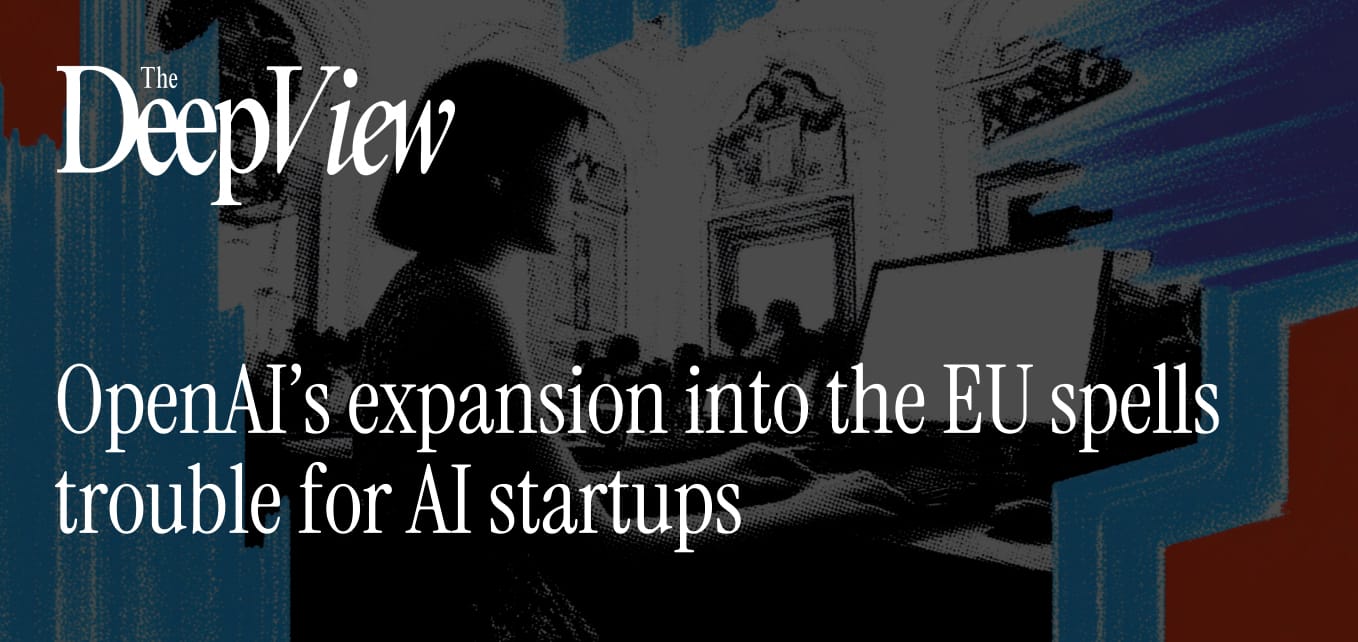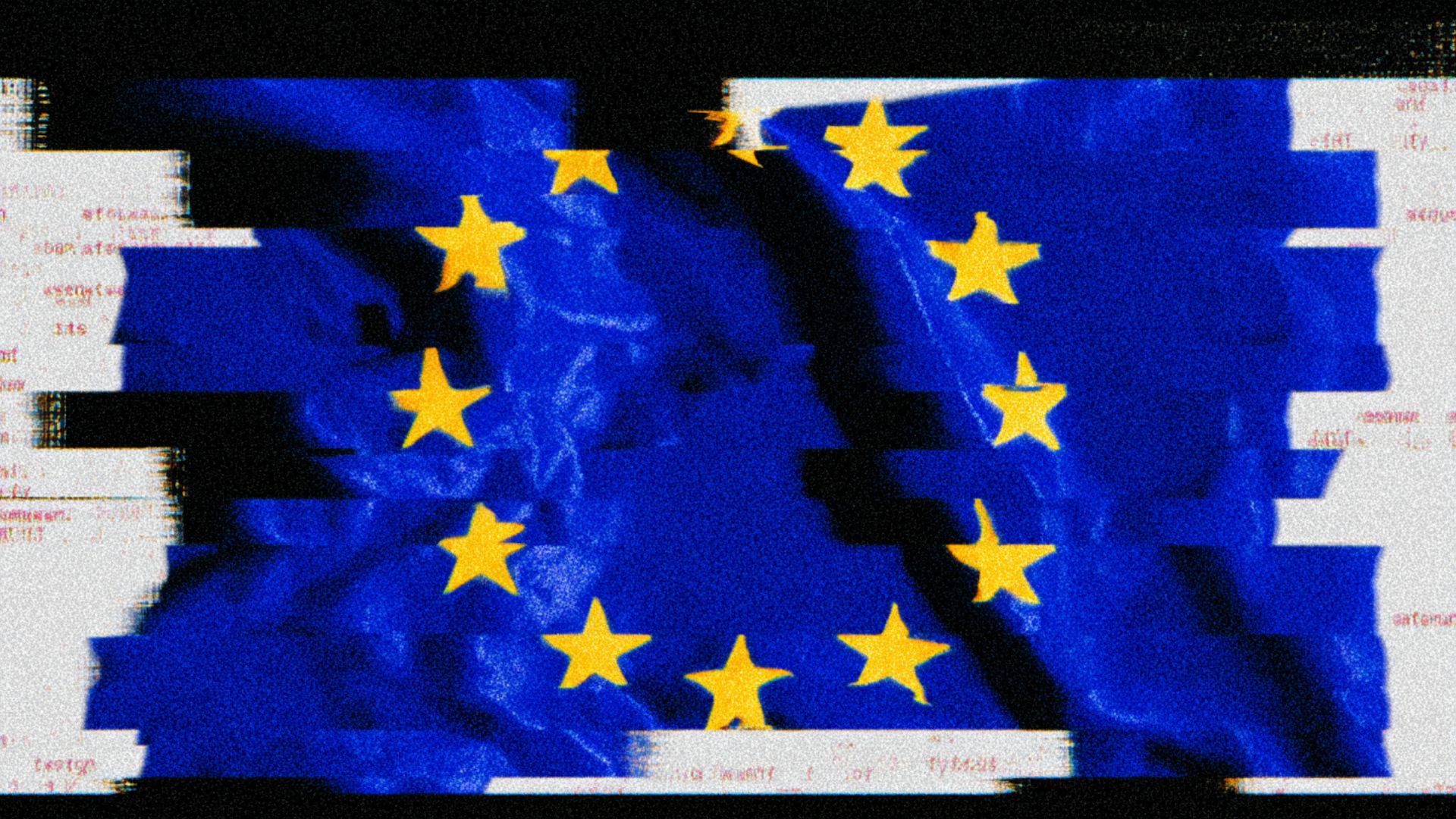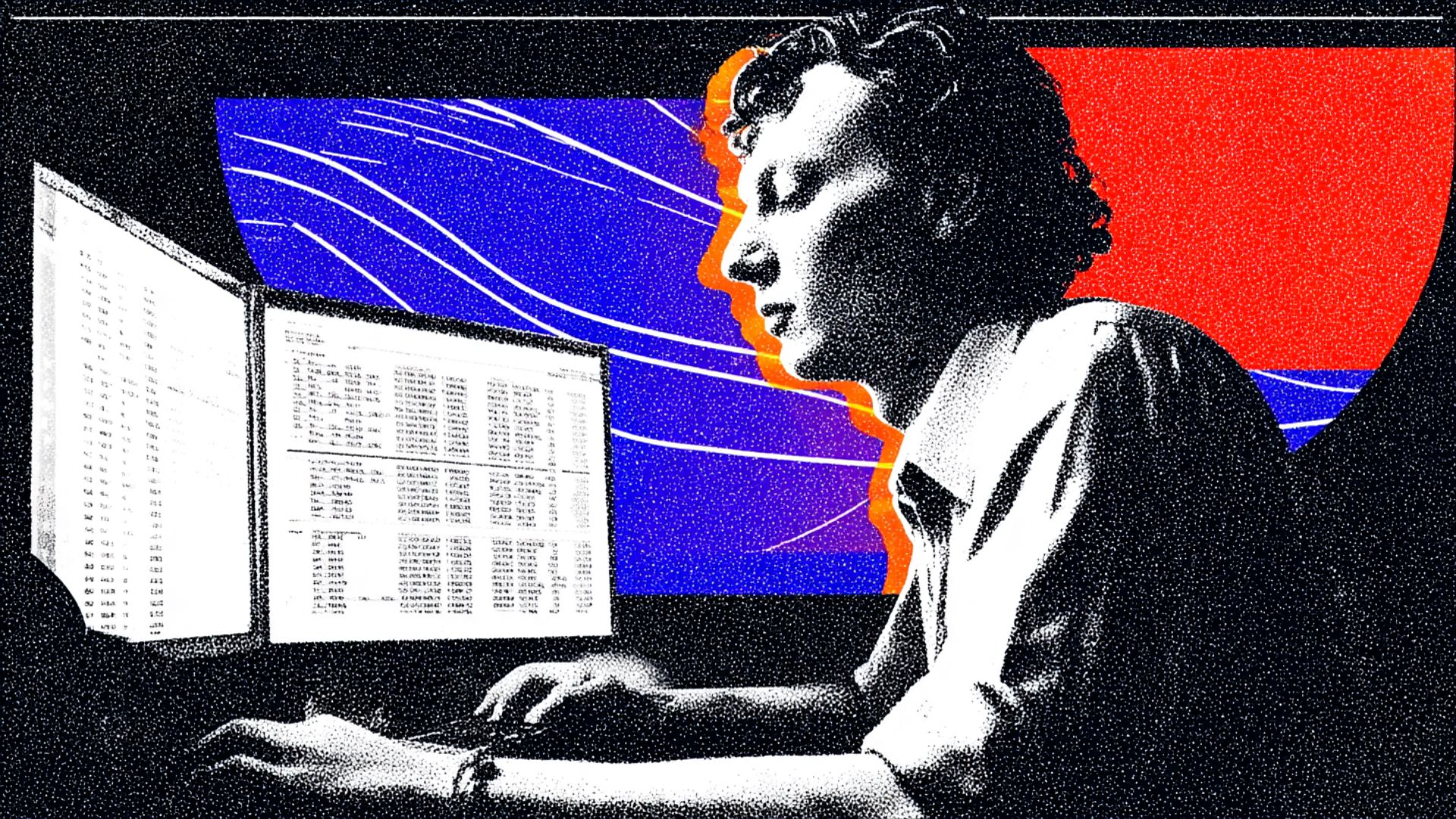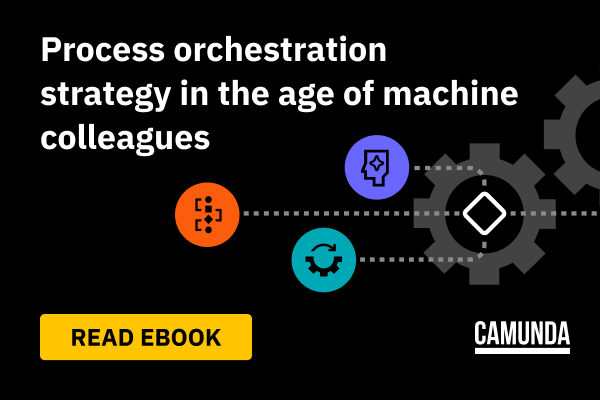OpenAI’s expansion into the EU spells trouble for AI startups
October 28, 2025

Welcome back. Elon Musk is back at it again with the launch of Grokipedia v0.1, an AI-powered Wikipedia rival that claims to be a less biased alternative. The site went live with over 885,000 articles, around 10% of the number on Wikipedia’s English site, though many appear copied word-for-word from Wikipedia itself.
IN TODAY’S NEWSLETTER
1. OpenAI’s expansion into the EU spells trouble for AI startups
2. Claude just became your new financial analyst
3. The AI talent wars may become decentralized
STARTUPS
OpenAI’s expansion into the EU spells trouble for AI startups

Europe is becoming a key overseas market for OpenAI’s ChatGPT, raising concerns over the EU’s reliance on foreign tech.
ChatGPT Enterprise adoption has surged sixfold year-over-year across Europe, the Middle East and Africa, with rising interest from finance, retail and life sciences firms, Nicolai Skabo, OpenAI’s enterprise lead for the regions, told Bloomberg. Governments are signing on, too: the UK recently agreed to roll out ChatGPT Enterprise across its 2,500-person civil service, joining Germany and Greece in deploying the chatbot across government workforces.
As ChatGPT embeds itself deeper into Europe’s digital infrastructure, experts worry that OpenAI’s dominance could choke local AI innovation amid a tough economic and regulatory landscape. Some call for bigger investments in homegrown startups, relaxed regulations, and a stronger talent pipeline.
“There is really no LLM model provider that can approach the scope, scale, and breadth of functionality of OpenAI,” Scott Bickley, Advisor Fellow at Info-Tech Research Group, told The Deep View. “The next in line are not European-based companies either… it is hard to envision how [the EU] could muster the massive investments and infrastructure to compete.”
Some experts say that the imbalance makes it harder for European firms to scale.
“The EU is ahead on responsible AI frameworks, but still trails the U.S. in commercializing innovation,” said Jonathan Garini, CEO of enterprise AI startup fifthelement.ai, referring to the EU AI Act. “Deeper integration of OpenAI sets a higher barrier for startups and strengthens competitive pressure.”
Some are already leaving.
“Our decision to migrate key operations to North America wasn’t about abandoning Europe; it was about survival,” Juan Graña, CEO of Neurologyca, an AI startup founded in Spain, told TDV. “In the U.S., the ecosystem rewards experimentation… In Europe, it’s heavily mediated by compliance.”
“If Europe doesn’t want to depend on U.S. or Chinese technologies, it must create the conditions for its own to thrive,” Graña said.

OpenAI’s threats to Europe’s homegrown AI ecosystem offer a glimpse of what’s to come if U.S. tech giants continue to dominate the global AI landscape. America’s lead stems from a business-friendly culture backed by massive investment in infrastructure, compute and talent. However, most countries, especially in the Global South, lack the regulatory flexibility and resources to replicate the U.S. model. If nations want a meaningful stake in the AI economy, they must treat AI as a nation-building priority despite the risks. If not, the AI gap will only widen—and many will be left playing catch-up.
TOGETHER WITH EIGHT SLEEP
AI Can Now Optimize Your Sleep
By now, we all know that AI can take meeting notes, qualify leads, and do whatever other work tasks you might need. The better question is, when will it finally tackle what really matters… our sleep?
Lucky for us, the answer is right now – and it’s all thanks to Eight Sleep. Their Pod 5 Smart Mattress Cover is a personal sleep coach, health monitor, and thermostat all in one. It uses Autopilot AI to learn your sleep patterns and automatically adapt temperature, elevation, and wake-up timing to ensure you get your best sleep ever.
If you want to fall asleep faster, sleep longer, wake up with more energy, and countless other benefits, check out the Pod 5 Smart Mattress Cover right here.
PRODUCTS
Claude just became your new financial analyst

On Monday, Anthropic unveiled an Excel add-in for its Claude AI assistant, aiming at the high-stakes financial services market with pre-built "Agent Skills" for tasks such as building discounted cash flow models and conducting earnings analyses.
The move comes as competition intensifies in the spreadsheet AI space. Microsoft has spent the past year aggressively embedding its own Copilot into Excel, culminating in an Agent Mode launch last month using OpenAI's GPT-5. Now Anthropic is placing Claude directly into Microsoft's flagship application.
Claude for Excel uses a sidebar to read, analyze and modify spreadsheets while providing full transparency into its changes. The add-in also connects to real-time market data from providers like LSEG and Moody's, positioning it as an enterprise solution for financial analysts.
But not everyone is convinced that pre-packaged financial templates are the winning approach.
"Every company has its own way of building a DCF, so it's not something you can turn into a perfectly repeatable code-block," Nico Grant, who runs Shortcut.ai, a competing Excel AI tool, told The Deep View. Grant's startup has been in the market for three months with paying customers.
Shortcut takes a different tack: rather than emphasizing data integrations, it focuses on working with "messy, real-world spreadsheets" that analysts already have. Grant said his users are willing to iterate through 20+ prompts per file, far more engagement than he initially expected.
"There is more valuable knowledge work done on spreadsheets than IDEs," Grant said. "We intend for our differentiator to be accuracy and performance, not industry focus."
The dueling approaches reflect broader questions about how AI will fit into financial workflows. Pre-built skills versus flexible agents, external data versus existing files. As models improve, the real test may be which philosophy better matches how analysts actually work.
TOGETHER WITH CAMUNDA
The 3 Types of AI Orchestration
AI is the new norm in business (heck, you’re reading a daily newsletter about it right now). But as the industry as a whole scales and adoption grows, it’s more important than ever to make sure you’re doing it right – and that means using the proper approach for every task.
Exactly why Camunda has pulled together this free guide on Process Orchestration Strategy. It covers everything from the importance of orchestration in your AI strategy to the different styles and their ideal situations, like:
Deterministic Orchestration for repeatable processes
Dynamic Orchestration for changing ones
Agentic Orchestration for when you need autonomy and reasoning
Download your free copy right here – and don’t forget to say “thank you, Camunda!”.
WORKFORCE
The AI talent wars may become decentralized

AI developers may be the architects of their own unemployment.
Last week, Meta cut roughly 600 jobs from its AI unit, Meta Superintelligence Labs, Bloomberg reported. According to an internal memo viewed by Bloomberg, the goal of the cuts was to streamline decision-making and give individuals more responsibility and impact. Additionally, on Thursday, Meta said that it’s laying off an undisclosed number of employees in its risk organization, using AI to automate the compliance review process.
Despite the cuts, there is still a premium on AI talent, Brian Jackson, principal research director at Info-Tech Research Group, told The Deep View. “If you're a person that can contribute to the development of an AI frontier model, the world is your oyster right now.”
But as more and more code is developed using AI, that may be subject to change, said Jackson. For instance, Anthropic CEO Dario Amodei said at Salesforce’s Dreamforce event that 90% of code written at the company is done by AI. Though engineers aren’t on the chopping block yet, a Stanford study found that employment for early-career developers dropped 20% between 2022 and 2025.
While it’s possible – and even a “probable future” – that AI developers could do their jobs so well that they themselves become less necessary, what also may happen is that these developers will become “distributed and decentralized” throughout different sectors of the economy, said Jackson.
When AI development moves beyond simply pushing the boundaries of bigger and better, there might eventually be less need for core AI developers. That talent may become embedded in areas such as healthcare, manufacturing and finance, he said.
Still, with the rapid pace of development, not everyone will be able to keep up.
“There will be people that are on the outside of this equation,” said Jackson. “Not everybody has the opportunity to become like a data scientist or an AI specialist.”
LINKS

OpenAI urges the US to build 100 GW of annual energy capacity to compete with China in AI
China’s MiniMax launches M2, which costs 8% of Claude Sonnet and is 2x faster
SoftBank greenlights remaining $22.5B investment into OpenAI
OpenAI says over a million people talk to ChatGPT about suicide weekly
US Department of Energy forms $1B supercomputer and AI partnership with AMD
Real estate agents are using AI tools to replace videographers, stagers, leading to slop
Qualcomm is turning parts from cellphone chips into AI chips to rival Nvidia

Odyssey-2: Type and get instant, interactive AI videos generated
Nori: Connect all your health data and get AI-powered personalized insights
V0 for iOS: You can now use v0 on the go with their iOS app
Mico: Microsoft has brought back Clippy in the form of Mico
Reducto: AI document parsing & extraction software

A QUICK POLL BEFORE YOU GO
Should Europe prioritize building homegrown AI competitors or focus on regulating foreign tech giants? |
The Deep View is written by Nat Rubio-Licht, Aaron Mok, Faris Kojok and The Deep View crew. Please reply with any feedback.
Thanks for reading today’s edition of The Deep View! We’ll see you in the next one.

“The first light pole on the left of the fake image goes through an awning” “TBH, my first instinctive reaction was this was the real photo, but the signs, license plates and electrical wires are a dead give away.” “It was hard to tell as both low res, but AI does not do wires and tiles well (it misses the logic) and it had included a lot of wires and tiles which showed those characteristic errors.” |
The patches of blue just didn't look right in [the other image]. On the other hand, neither did the size of the pagoda in [this image].” “The lighting of the sky seems real. If it was AI it would be clear.” “It doesn't look touched up” |

Take The Deep View with you on the go! We’ve got exclusive, in-depth interviews for you on The Deep View: Conversations podcast every Tuesday morning.

If you want to get in front of an audience of 450,000+ developers, business leaders and tech enthusiasts, get in touch with us here.






